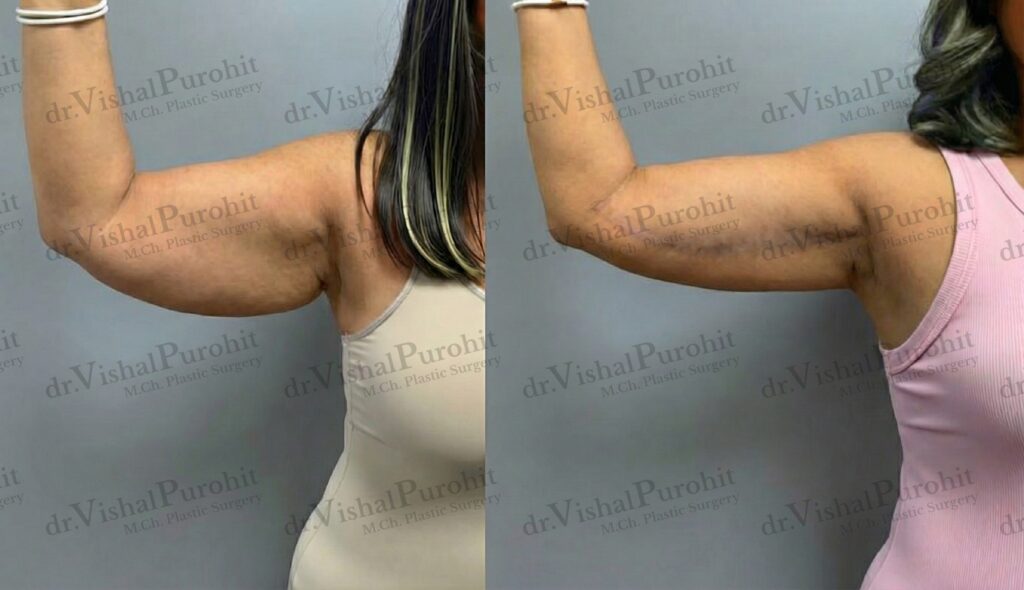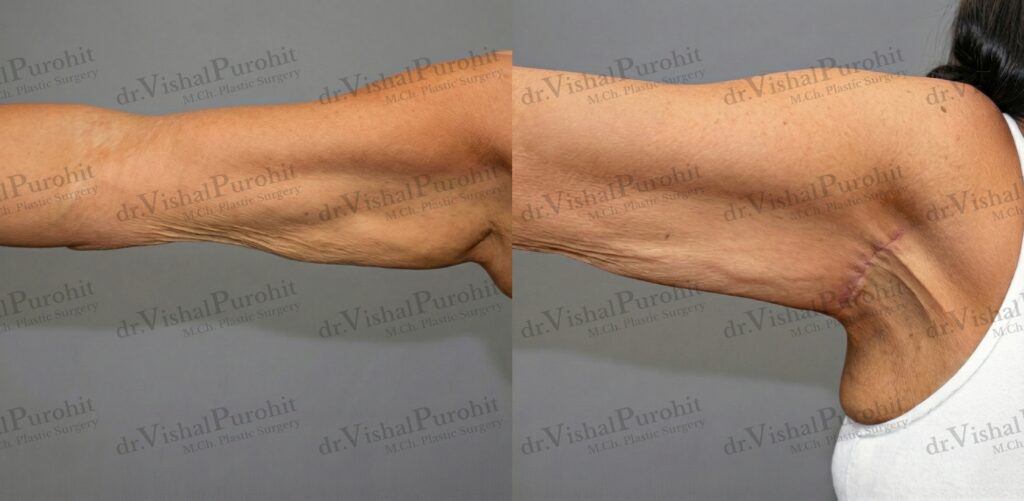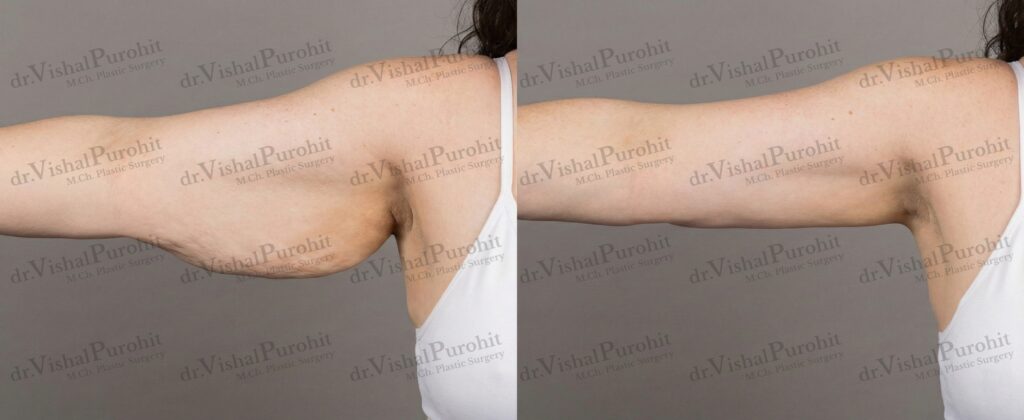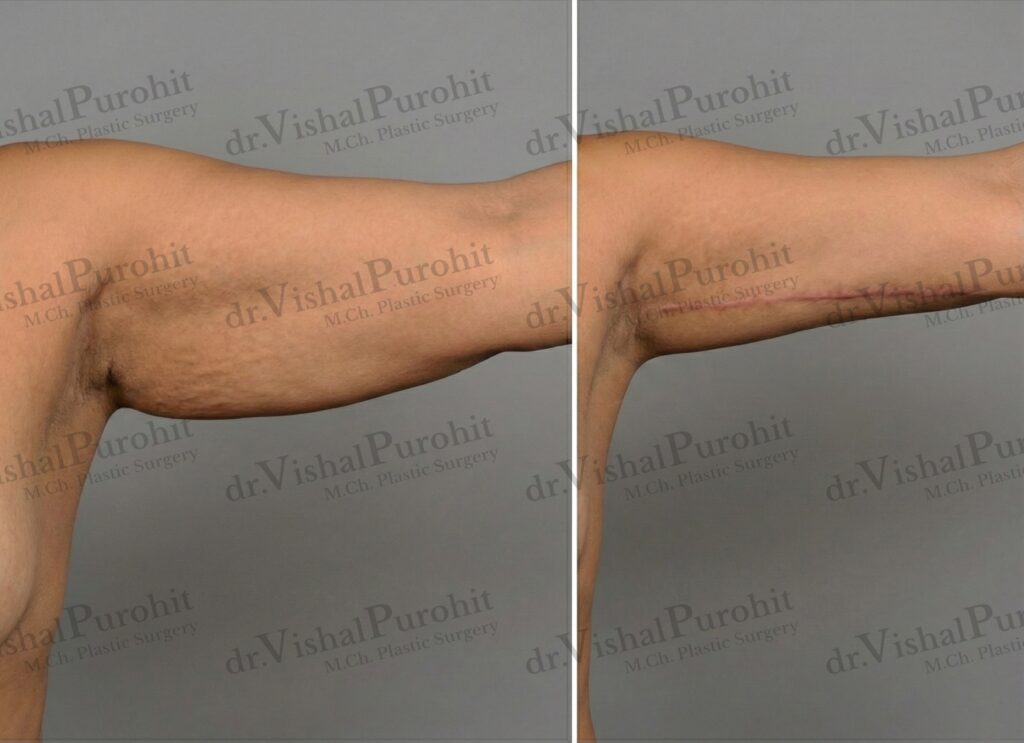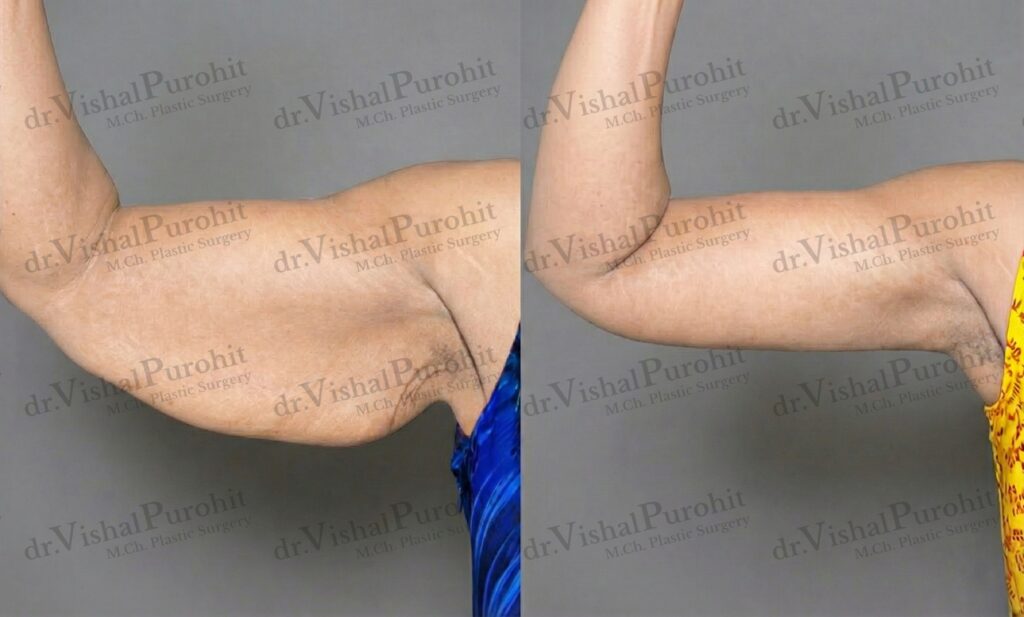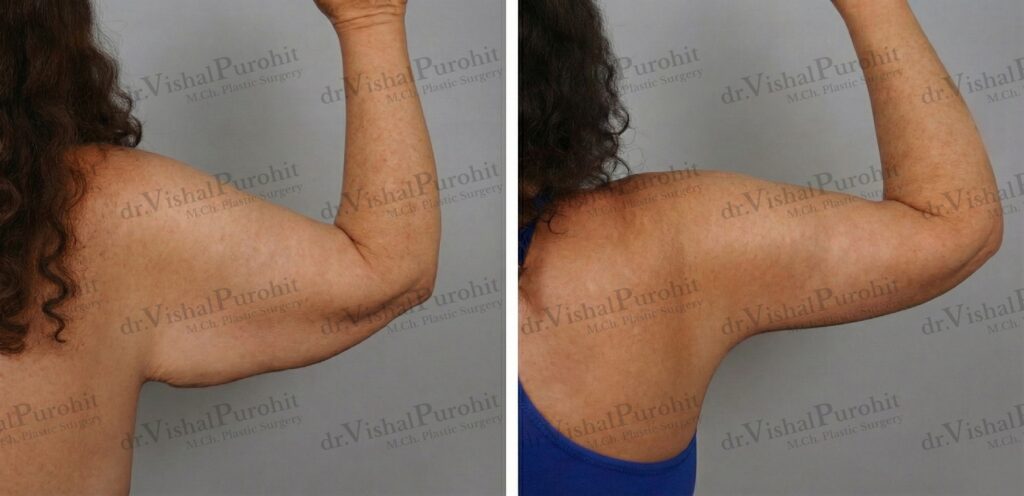Introduction
Understanding Brachioplasty
Brachioplasty, commonly known as an arm lift, is a transformative cosmetic surgery procedure designed to reshape and enhance the appearance of the upper arms. This procedure is particularly beneficial for individuals who have experienced significant weight loss or natural aging, leading to excess skin and tissue in the arm area. By removing this excess skin and fat, brachioplasty restores a more toned and contoured look, boosting both aesthetics and confidence.
The Importance of Knowing the Procedure
Understanding the nuances of brachioplasty is crucial for anyone considering this life-changing surgery. The journey to a successful arm lift involves more than just the surgery itself; it encompasses everything from the initial consultation to the postoperative care and recovery. A well-informed patient is better equipped to make decisions aligned with their health and aesthetic goals, leading to a more satisfactory outcome. Knowing what the procedure entails, its benefits, and potential risks ensures that your expectations are realistic and achievable.
What to Expect in This Guide
This comprehensive guide is crafted to walk you through every step of the brachioplasty process. You’ll gain valuable insights into:
- Initial Consultation and Planning: Choosing the right surgeon, assessing your candidacy, and customizing the procedure to your unique needs.
- Preoperative Preparations: Necessary medical evaluations, lifestyle adjustments, and mental and physical preparation tips.
- The Brachioplasty Surgery Process: Details about anesthesia, incision techniques, and the surgical process itself.
- Postoperative Care: Guidance on aftercare, wound management, and complication monitoring.
- Recovery and Follow-Up: Insights into the short-term and long-term recovery phases, including scar management and regular follow-up visits.
- Potential Risks and Complications: Understanding the common risks associated with brachioplasty and how to mitigate them.
By the end of this guide, you’ll have a thorough understanding of the brachioplasty journey, empowering you to make informed decisions about your cosmetic surgery options. Stay tuned as we delve deeper into the art of brachioplasty, a procedure that not only enhances your physical appearance but also uplifts your spirit.
2. Initial Consultation and Planning
Choosing the Right Surgeon
Selecting the right surgeon for a Brachioplasty is a critical first step in your arm lift journey. It’s important to choose a plastic surgeon who is not only highly skilled and experienced but also specializes in arm lift procedures. Look for board-certified surgeons, like Dr. Vishal Purohit, who have a proven track record of successful surgeries and satisfied patients. Researching the surgeon’s background, and reading patient testimonials can provide valuable insights into the surgeon’s expertise.
Assessing Candidacy for Brachioplasty
Determining if you are a good candidate for brachioplasty is essential. Ideal candidates are those who have:
- Excess, sagging skin on the upper arms.
- Stable weight with no significant fluctuations.
- Good overall health without conditions that could impair healing.
- Realistic expectations about the outcome of the surgery.
During the initial consultation, your surgeon will evaluate your medical history, conduct a physical examination, and discuss your aesthetic goals to ensure that brachioplasty is the right choice for you.
Tailoring the Procedure to Individual Needs
Every patient’s needs and expectations are unique, and thus, the arm lift procedure must be customized accordingly. This includes deciding on the type of incision, the extent of tissue removal, and combining the arm lift with other procedures if necessary. According to the authors Hoang, Don Broer, Niclas Narayan, Deepak of the paper about “Novel Use of an Orthopedic Limb-Positioning Device for Brachioplasty”, understanding the different aspects and variations of cosmetic procedures is vital for both medical professionals and patients. This research highlights the importance of individualized care in cosmetic surgery. The procedure should align with the patient’s body type, health status, and desired results.
For more insights on combining arm lift surgery with other body contouring procedures, consider reading Combining Arm Lift Surgery with other body contouring procedures.
By following these steps in the initial consultation and planning phase, you can set a solid foundation for a successful brachioplasty experience.
Preoperative Preparations
Medical Evaluations and Clearances
Before undergoing brachioplasty, a series of medical evaluations and clearances are necessary to ensure you are fit for the procedure. This includes:
- Comprehensive Health Assessment: A detailed review of your medical history, current medications, and any existing health conditions.
- Laboratory Tests: Blood tests to check for any underlying health issues that might affect surgery or recovery.
- Preoperative Imaging: Imaging studies may be required to assess the structure and condition of the arms.
- Clearance from Specialists: If you have specific health conditions, clearance from relevant specialists, such as a cardiologist or endocrinologist, might be necessary.
These evaluations help in minimizing the risk of complications during and after the surgery.
Lifestyle Adjustments Pre-Surgery
To ensure the best possible outcomes from brachioplasty, certain lifestyle adjustments are recommended:
- Smoking Cessation: Smoking can impair healing and increase the risk of complications. It’s advised to quit smoking at least a few weeks before the surgery.
- Healthy Diet: A balanced diet aids in recovery and boosts overall health.
- Avoiding Certain Medications: Some medications and supplements can increase the risk of bleeding and should be avoided.
- Physical Fitness: Being in good physical shape can help with faster recovery post-surgery.
Preparing Mentally and Physically
Mental and physical preparation is crucial for a smooth surgery and recovery process. This includes:
- Understanding the Procedure: Being well-informed about the surgery steps, risks, and expected outcomes.
- Setting Realistic Expectations: Knowing what the surgery can and cannot achieve.
- Mental Preparation: Stress management techniques like meditation or counseling can be beneficial.
- Physical Conditioning: Engaging in light exercises as advised by your surgeon to maintain good physical health.
According to the authors Garoosi, Kassra Mundra, Leela Jabbari, Kayvon Winocour, Julian Iorio, Matthew L Mathes, David W Kaoutzanis, Christodoulos of the paper about Body Contouring Procedures, understanding the potential complications and risk factors associated with body contouring procedures, including brachioplasty, is vital for both surgeons and patients. Their study emphasizes the importance of thorough preoperative preparations in minimizing risks and ensuring optimal outcomes.
Proper preoperative preparations lay the foundation for a successful brachioplasty procedure, contributing significantly to the overall success and patient satisfaction with the results.
The Brachioplasty Surgery Process
Anesthesia and Incision Techniques
The brachioplasty procedure begins with the administration of anesthesia to ensure a pain-free experience. Depending on the extent of the surgery and patient preferences, this can be either general anesthesia or local anesthesia with sedation. Once the anesthesia takes effect, the surgeon makes incisions in the predetermined areas. The incision technique varies based on the amount of skin and fat to be removed, as well as the patient’s specific anatomy. Common incision patterns include:
- Inner Arm Incision: Runs along the inside of the arm.
- Back of the Arm Incision: Positioned on the back side of the arm.
- Minimal Incision: Small incision near the armpit, suitable for patients with less excess skin.
Tissue Removal and Reshaping
During the surgery, excess skin and fat are carefully removed to reshape the upper arm. This process is not only about reduction but also about contouring and smoothing the arm’s appearance. The techniques used may include:
- Liposuction: To remove excess fat and contour the arm.
- Excision: Where excess skin is surgically removed.
- Reshaping: The remaining skin and tissue are reshaped to create a more toned and defined arm appearance.
Closing the Incisions
Once the reshaping is complete, the surgeon meticulously closes the incisions. This step is crucial as it impacts both the healing process and the appearance of scars. Techniques used include:
- Sutures: Internal stitches that dissolve over time.
- Skin Adhesives or Tapes: To close the skin externally.
Post-surgery, the arms are wrapped in bandages, and in some cases, small tubes might be placed to drain any excess fluid. This part of the process is critical for ensuring a smooth and complication-free recovery.
The brachioplasty surgery process is a delicate balance of art and science, requiring meticulous attention to detail to achieve the desired aesthetic results while ensuring patient safety and comfort. Understanding each step of the procedure can help patients feel more at ease and informed about their transformation journey.
Postoperative Care
Immediate Aftercare and Hospital Stay
After the brachioplasty surgery, immediate aftercare is crucial for ensuring a smooth recovery and optimal results. Patients typically stay in the hospital or surgical facility for a short period to be monitored by the medical team. Key aspects of immediate aftercare include:
- Monitoring Vital Signs: Regular checks of heart rate, blood pressure, and oxygen levels.
- Pain Management: Administration of pain relief medications to manage discomfort.
- Fluid Intake and Nutrition: Ensuring adequate hydration and a balanced diet to aid in recovery.
- Mobilization: Encouraging gentle movements to promote circulation and prevent blood clots.
Wound Care and Pain Management
Proper wound care is essential to prevent infection and ensure good healing. The wound care regimen typically involves:
- Dressing Changes: Regularly changing bandages to keep the surgical site clean.
- Observing for Signs of Infection: Watching for redness, swelling, or discharge from the incision sites.
- Pain Management: Using prescribed pain medications as directed to manage discomfort.
Monitoring for Complications
It’s important to monitor for any signs of complications post-surgery. Patients should be aware of symptoms like excessive swelling, severe pain, signs of infection, or any unusual changes in the surgical area. According to the authors Filobbos, George Chapman, Thomas of the paper about Compression Dressing for Brachioplasty, using compression garments postoperatively can significantly help in reducing complications like seroma and hypertrophic scarring, which are common after brachioplasty. Their findings highlight the effectiveness of simple yet essential postoperative care practices.
Postoperative care is a critical phase in the brachioplasty journey, requiring close attention and adherence to the surgeon’s instructions. Proper care not only ensures a smooth recovery but also plays a significant role in achieving the desired aesthetic outcomes.
Recovery and Follow-Up
Short-Term Recovery Phase
The short-term recovery phase following brachioplasty is crucial for the success of the procedure. During this period, patients may experience swelling, bruising, and discomfort, which typically improve within the first few weeks. Key points in short-term recovery include:
- Rest and Limited Activity: It’s essential to rest and avoid strenuous activities to promote healing.
- Managing Swelling and Bruising: Using cold compresses and keeping the arms elevated can help reduce swelling.
- Pain Management: Following the prescribed pain management plan to stay comfortable.
- Wound Care: Proper care of the incision sites to prevent infection and promote healing.
Long-Term Healing and Scar Management
Long-term healing focuses on scar maturation and returning to normal activities. This phase can last several months and involves:
- Scar Care: Using silicone sheets or gels, and massaging the scars to improve their appearance.
- Gradual Return to Activities: Slowly resuming exercise and regular activities as guided by the surgeon.
- Monitoring Changes: Keeping an eye on the healing process and reporting any concerns to the surgeon.
Regular Follow-Up Visits
Regular follow-up visits with the surgeon are essential to monitor progress and address any concerns. During these visits, the surgeon will:
- Assess Healing: Check the incision sites and overall arm contour.
- Adjust Care Plan: Make changes to the recovery plan if needed.
- Provide Guidance: Offer advice on activities, scar care, and long-term outcomes.
According to the authors Taylor, Jesse Shermak, Michele of the paper about Body Contouring Procedures, patients undergoing body contouring surgeries, including brachioplasty, require individualized approaches with intensive follow-up, especially after significant weight loss. Their study underlines the importance of continuous monitoring and personalized care during the recovery phase.
The recovery and follow-up phase is a time of transformation and healing. Staying informed and closely following the surgeon’s guidance can greatly impact the final outcome of your brachioplasty.
Potential Risks and Complications
Common Post-Surgery Risks
Every surgical procedure, including brachioplasty, carries certain risks. It’s important for patients to be aware of these potential complications, which can include:
- Infection: Although rare, infections can occur at the incision sites.
- Hematoma: Accumulation of blood under the skin that may need to be drained.
- Seroma: Collection of fluid in the tissue which may require drainage.
- Scarring: While scars are an inevitable part of any surgery, their appearance can vary.
- Nerve Damage: Temporary or permanent changes in sensation in the arm area.
- Blood Clots: There is a risk of developing blood clots, particularly in the legs (deep vein thrombosis).
How to Mitigate Risks
There are several steps that can be taken to reduce the risks associated with brachioplasty:
- Choosing a Qualified Surgeon: Ensure your surgeon is experienced and board-certified in plastic surgery.
- Following Pre- and Post-Operative Instructions: Adhering strictly to your surgeon’s guidelines can significantly reduce the risk of complications.
- Maintaining Good Health: Being in good health before the surgery can improve outcomes and reduce risks.
- Regular Follow-Up: Attending all post-operative appointments for monitoring and early detection of any issues.
When to Seek Medical Attention
Patients should be vigilant for any signs of complications and seek medical attention if they notice:
- Increased Redness, Swelling, or Pain: These can be signs of infection or other complications.
- Changes in Skin Sensation or Movement: Indicating possible nerve involvement.
- Unusual Discharge from Incisions: Could be a sign of infection or seroma formation.
- Shortness of Breath or Chest Pain: These are serious symptoms that could indicate a blood clot and require immediate medical attention.
According to Michele A. Shermak in their paper about Incidence and Risk Factors of Major Complications in Brachioplasty, while the risk of major complications in brachioplasty is relatively low, being informed about these risks is crucial for patients. The study emphasizes the importance of understanding these risks to make informed decisions and prepare for a safe recovery process.
Being informed about the potential risks and complications of brachioplasty is a vital part of the patient’s journey. This knowledge empowers patients to actively participate in their care and recovery process, ensuring the best possible outcomes.
Summary
Recap of the Brachioplasty Journey
This comprehensive guide has walked you through the entire journey of brachioplasty, from the initial consultation and planning stages to the surgery process, postoperative care, recovery, and understanding potential risks and complications. Each step of this transformative procedure has been detailed to provide a clear understanding of what to expect and how to prepare for the best possible outcomes. For more detailed information, visit the main article on Arm Lift in Jaipur.
Emphasizing the Role of Patient Involvement
Your involvement as a patient plays a crucial role in the success of your brachioplasty journey. Being well-informed, adhering to pre- and post-surgical instructions, and actively participating in your recovery process are key to achieving the desired results. Remember, your engagement, questions, and active role in the process are integral to the success of the surgery.
Encouraging Consultation for Personalized Information
Every individual’s needs and expectations are unique, making personalized consultation essential. If you are considering brachioplasty or any other cosmetic surgery, we encourage you to contact Dr. Vishal Purohit for a personalized consultation. You can reach out via call or WhatsApp/Telegram on +91-7718183535. For more information or to visit the clinic, refer to this Google Maps link. Dr. Purohit’s expertise and tailored approach ensure that each patient receives the best care suited to their individual needs.
Disclaimer: This article is intended for informational purposes only and should not be considered as medical advice. It is always recommended to consult with qualified healthcare professionals for medical advice, diagnosis, or treatment. The information provided herein is based on general experiences and may not apply to every individual’s specific circumstances.








